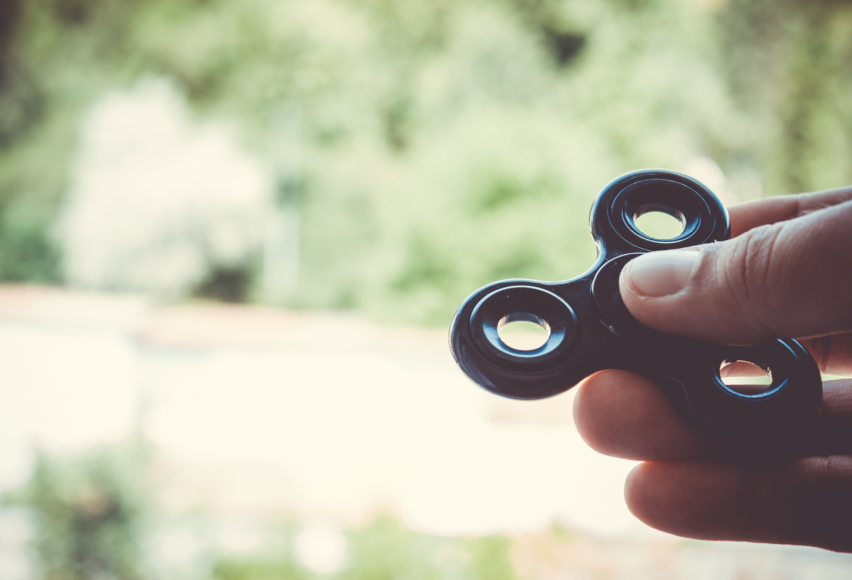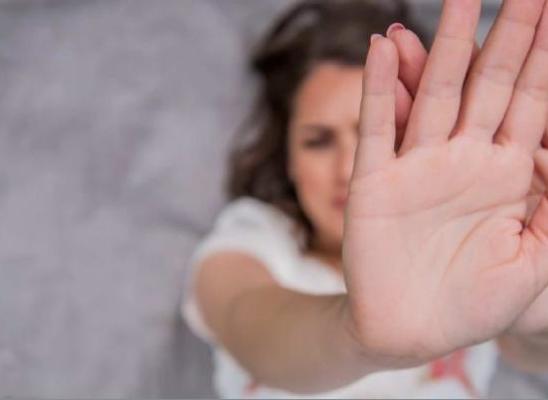Tools for Temptation: Essentials to Combat The Urge to Pull

Online test
Find out the severity of your symptoms with this free online test
Whether you’re new to the experience of hair pulling or you’ve lived with it for some time, you’re probably always on the look out for tips, tools, and strategies to help you look and feel your best. There are so many options out there. How do you know which might be helpful and which are just hype? We’ve done the research for you. We’ve compiled a list of must-have tools and products to help you manage your trich and feel your best.
Fiddles, Fidgets, and More
Keeping your hands busy might sound cliché but it is an effective strategy for many people when those urges to pull hit. While it might sound like child’s play, having a fidget, fiddle, spinner or other such tool can keep your brain focused on something besides the urge.
Fidgets and similar tools are great because they tend to be small and discreet. You can use them almost anywhere. There’s no shortage of spinners, pop-its and more on the market. Here are a few to consider based on a recent review:
Best On The Go - The Antsy Fidget Cube
This cube has six different actions on each side: Click, Glide, Flip, Breathe, Roll, and Spin. These features are great for reducing anxiety and pressure. It is
Best Desk Toy – Fidgi Pen
This pen offers several functions including clicking, spinning, and has a textured grip. It can help you keep those hands busy when you’re at your desk or on the go.
Best Band – Sensory Genius Band
If you prefer something wearable, you might like a sensory band. These bands are textured silicone and flexible.
What might surprise you is that almost anything can be used as a fidget:
- rubbing 2 coins together
- a river stone
- a key chain
- a squishy ball
Want more ideas for fiddles and fidgets? Check out this list from the TLC Foundation.
Dealing with Hair Loss
Will my hair grow back? It’s one of the most often expressed concerns by people living with trich. Of course, the first step in regrowing hair is to stop the excessive pulling. Treatment can help with that process. You want to give your hair a chance to grow. Here are some tools and products that may be helpful too.
Hair Supplements
There are many hair supplements on the market. It can be overwhelming to decide which ones are right for you. What does the science say?
Results are mixed. Many of the popular vitamins associated with hair growth have been studied and shown to have little impact on hair regrowth. However, some people do experience some benefits. If you’re considering supplementation, it’s important to discuss your options with your healthcare provider. Even “vitamins and minerals” can have side effects that you want to consider before choosing.
Microneedling
Microneedling is a dermatological procedure that creates tiny punctures on the skin to stimulate the release of factors that promote wound-healing and angiogenesis (new blood vessel growth). For people with trich, microneedling has been shown to be helpful in stimulating hair regrown over time.
Gentle Hair Care
New growth hair can be quite fragile, and sometimes be more course than before. Stylists familiar with trich recommend adopting a gentle hair care routine to help nurture your scalp and keep it healthy as new hair emerges. Moisturizing hair products can help keep your hair healthy and smooth. Gentle massage can help stimulate blood flow. Gentle hair products can keep your hair and scalp clean and healthy.
Hair Restoration
Sometimes the hair follicle is permanently damaged. Hair restoration may be an option but not if you continue to pull. It’s a conversation to have with your dermatologist or hair care specialist.
Accessorizing with Style
Styling your hair when it’s sparse can be challenging. You want something more than scarves and caps aren’t your thing. Here are some other options that can help you style your hair with confidence:
Hair Pieces
Not your average hair piece, there are hair pieces specially designed for people living with hair loss from trich. It’s important to protect the scalp so the bases are designed with scalp protection in mind.
One type of hair piece that has gained attention uses a method called beaded matrix attachment. This technique involves attaching the hairpiece using small beads that are carefully threaded onto the natural hair strands. The idea is that the beads create a secure and comfortable foundation for the hairpiece, preventing it from slipping or causing discomfort.
When it comes to hair extensions, the reviews are mixed. Some people find them helpful in avoiding pulling. Others find them to be triggering.
If you’re considering hair pieces, have a conversation with your hair care specialist to determine what type of hair piece might be right for you.
Bands, Barrettes, and Clips
Hair accessories can help you with styling your hair in ways that reflect your own sense of style. One of the challenges of styling hair that has been thinned due to pulling is how to keep the accessories in your hair. The good news is, there are now a number of hair accessories designed specifically for thin or sparse hair. Here are a few to check out:
Mini no slip grip bands or claw clips
Banana clips – They can make a ponytail look fuller and come in smaller sizes that may be better for thin hair.
Mini clips or barrettes – These are smaller versions of the same accessories you love.
Headbands with no slip grip
Being able to style your hair in the way you want is empowering and may have the added benefit of deterring you from pulling.
The Takeaway
Having ways to care for yourself and deter pulling is an important part of the treatment and healing process. Choose tools and strategies that you can use in multiple settings because you never know when an urge might be triggered. When you’re prepared, you have the confidence of knowing you can manage the moment.
References
1. Schneider, H. (2024, February 14). 9 discreet fidget toys for adults who need to do something with their hands to focus. Well+Good. https://www.wellandgood.com/fidget-toys-for-adults/
2. The great big list of favorite fiddles. (2024, 27). TLC Foundation for Body-Focused Repetitive Behaviors | BFRB. https://www.bfrb.org/articles/the-great-big-list-of-favorite-fiddles-or-stimulation-substitutes-and-behavioral-blockers-for-bfrbs
3. Do vitamins really promote hair growth? | Wimpole clinic. (2022, June 30). Best Hair Transplant | Voted UK Hair Transplant Clinic of 2023. https://wimpoleclinic.com/blog/vitamins-for-hair-growth-the-complete-guide-to-hair-supplements/#Best_vitamins_for_hair_growth_hair_count_change
4. Christensen, R. E., Schambach, M., & Jafferany, M. (2022). Microneedling as an adjunctive treatment for trichotillomania. Dermatologic Therapy, 35(11). https://onlinelibrary.wiley.com/doi/10.1111/dth.15824
5. Clark, C. (n.d.). What It's Like Living With A Hair Pulling Disorder. Hair.com. https://www.hair.com/trichotillomania.html
7. Hair piece for trichotillomania: A complete guide. (2023, November 25). noellesalon. https://noellesalon.com/blogs/hair-color-style/hair-piece-for-trichotillomania-a-complete-guide
8. https://www.reddit.com/r/trichotillomania/comments/rhtvj4/hair_extensions_to_solve_trich/
Online test
Find out the severity of your symptoms with this free online test
Start your journey with TrichStop
Take control of your life and find freedom from hair pulling through professional therapy and evidence-based behavioral techniques.
Start Now



